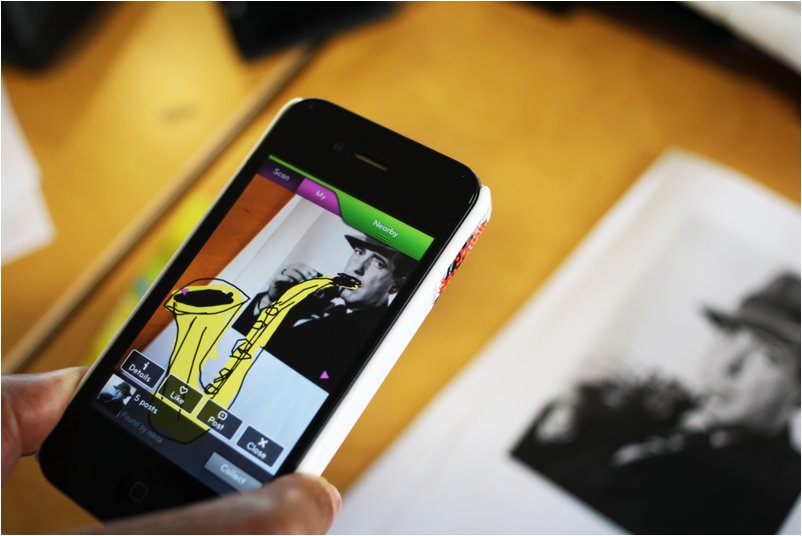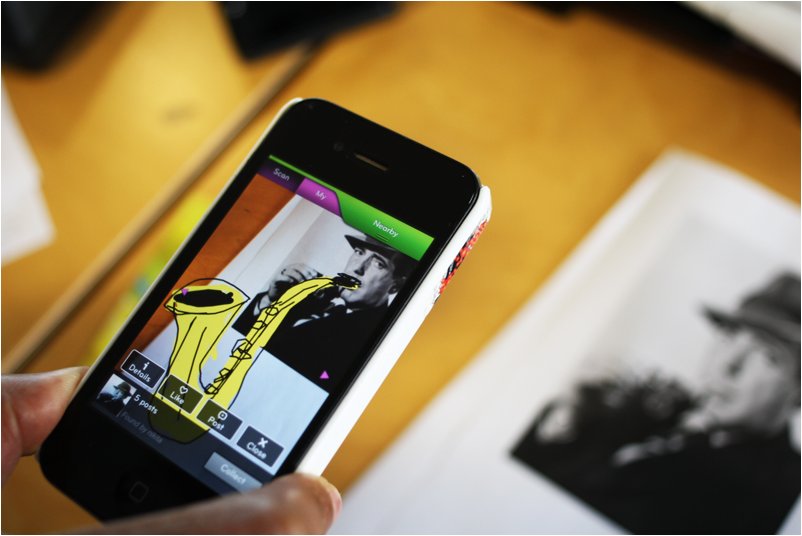Stiktu
Once upon a time secret messages were exchanged via invisible ink and a UV torch. Nowadays the same principle can be applied to just about any image, provided you and your recipient share a smartphone


Once upon a time secret messages were exchanged via invisible ink and a UV torch. Nowadays the same principle can be applied to just about any image, provided you and your recipient share a smartphone.
Augmented Reality (AR) pioneers Layar has developed a new app called Stiku that lets people create a digital image on just about anything. The way the app works is ingenuously simple: you take a photo using your smartphone which the app then identifies using 'computer vision' (CV) algorithms. You then scrawl your message, emblazoning it with clip art as you see fit, before uploading it to the Layar database. Anyone who points their smartphone lens at that image can see the message you've shared.
The use of AR to subvert the visual branding in public space has already been signalled by projects such as artvitiser but Layar's app opens the tools up to many more people. It holds the potential to be quite disruptive, too. How, for instance, could magazines work with the ability for their advertising space to be co-opted? And what of the potential of using CV scanning to pass messages in countries where communication methods are censored but have a greater penetration of smartphones than traditional personal computing platforms?



Discussion